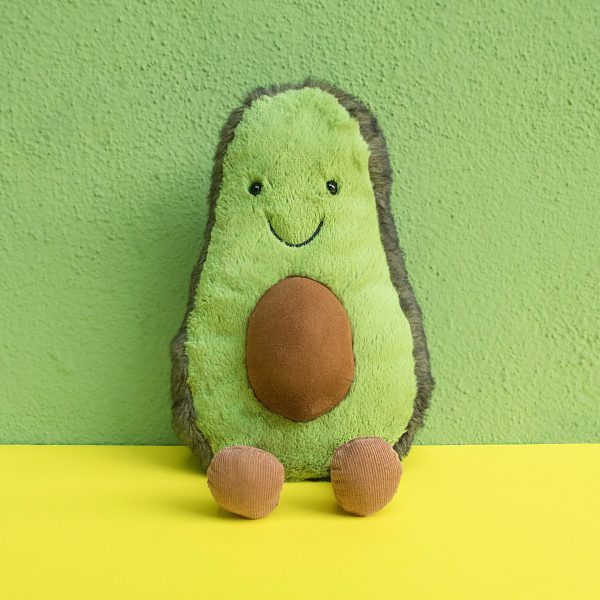Won’t somebody think of the cooks? Managing food supply shortages in ECEC

Many families around Australia are struggling to put dinner on the table, with supermarket shelves bare, and many staples, such as rice and pasta, no longer available as “panic buying” impacts on supply chains.
This problem is magnified when it comes to early childhood education and care (ECEC) services, many of whom are serving meals to more than 100 children a day, shopping online from local grocery chains such as Coles and Woolworths.
The Sector recently spoke with food and education consultant Bec Lloyd of UnYucky about the challenges being faced by those charged with meeting nutritional guidelines for children in these challenging times.
“Cooks and educators around Australia began noticing the disruptions caused by COVID-19 panic shoppers in the last days of February,” Ms Lloyd said, reporting that cooks were faced with an unusually high number of ‘out of stock’ entries in their online orders.
It is important here to note that in order to perform the role of cook in an early childhood service, no formal catering qualification is required. “Most employers apply a minimum of a Working With Children check, plus two of the components of a Cert III Children’s services course – Safe Food Handling and Menu Planning – which can be completed online within three months of starting work,” Ms Lloyd said.
As a result, some cooks have decades of experience in children’s kitchens but no qualifications. Some cooks are trained educators and directors, volunteering for kitchen duty on an informal basis. Sometimes educators returning from maternity leave offer to cook because the shorter shifts suit them and include the chance to backfill in educator breaks. As such, substitutions and alternative ordering sources may be unfamiliar, and an area where urgent help and support is needed.
When the out of stock notifications became more widespread, many cooks took to social media, expressing their concern, and seeking ideas about how to alter the menu to accommodate the shortages. Member organisations such as the Australian Childcare Alliance (ACA) soon began to receive calls from their member base seeking assistance and reassurance, concerned about meeting regulations with a shortage of basic ingredients.
In response to the concerns and calls for support, the ACA commissioned an advisory video from UnYucky, covering some key areas of concern including:
- Background on the shortages with a ‘don’t panic’ message. Food production hasn’t been interrupted, only the final retail step
- Alternative suppliers and, in particular, local small businesses like butchers and fruit shops
- Ingredient swaps and substitutes including quantity calculations (how many fresh tomatoes or dried chickpeas do you need to replace one tin?)
- Perspective: every challenging situation presents opportunities
- Compliance questions around the National Law, Regulations and Quality Standard.
With around half of Australia’s ECEC services providing meals, approximately 7,500 Australian providers are managing these supply issues, with restricted or cancelled deliveries also impacting on the previous ways in which services sourced food for children.
“It’s fair to assume every children’s cook has been affected in some way,” Ms Lloyd said. As such, the ACA determined that the video should be made publically available, rather than for members only, and shared it on Youtube. The viewing audience includes school canteen managers and home cooks, as well as those in ECEC.
“The complexity of the cook’s role is rarely appreciated until you’ve tried it yourself. We all know that early childhood education skills are undervalued, and the early childhood cook’s skills draw even less appreciation,” Ms Lloyd noted.
Some possible ingredient substitutions
Knowing that pasta and flour, tinned tomatoes and meat are in short supply, we asked Ms Lloyd for her suggestions as to what these could be replaced by, in order to still give the children delicious and healthy meals each day.
“How do you make a lasagne without pasta or flour? You buy packs of wraps and layer them instead. Or you make a cauliflower paste. Or you slice eggplants thinly, or even carrots,” she said.
For tinned tomatoes, apply a formula of 1kg fresh tomatoes per two tins, and “blend them without the fuss of peeling or de-seeding (because you’re feeding 100 children family style food, not impressing a Michelin judge).”
When meat is hard to come by, she suggested having more plant-based meals, or contacting butchers in the local area to see if they were able to support.
Lessons learned so far
There will come a time for extended reflection, Ms Lloyd said, but in the interim, three key lessons have been learned within the ECEC sector, in relation to sourcing meals and preparing ingredients in an ECEC context:
Don’t put all your eggs in one basket
“It’s understandably fast and convenient to place one online food order with one supplier and get one delivery. What many services are learning right now is they need a broader network of suppliers to properly manage their risk. This doesn’t have to mean shopping from seven main street stores, but it does mean having a solid Plan B in your local butcher, baker or farmers’ market box delivery, or to have an account with a wholesaler,” Ms Lloyd said.
Know the difference between regulations, policies and guidelines
“Fears about kitchen compliance are highlighting the confusion between regulations – legally required – and guidelines from a health department or policies from a provider,” she added.
“Regulation 79 says services must ensure food is ‘adequate and nutritious’ and cater to individual children’s requirements. Regulation 80 says you must have a menu and it must accurately reflect the food served each day – so update it if you change plans.”
“All the rest – frequency of red meat, number of vegetarian or sandwich days, notification of families – are guidelines or policies and you should meet them as well as you can in a challenging time.”
Get creative with fresh food
Fresh fruit and vegetables are generally in good supply but if familiar items are suddenly absent or expensive, be creative, eg, increase your ratio of fruit to veg on platters, or turn unusual but inexpensive vegetables into soup. Try to keep as much fresh food in the menu as possible to help meet the ‘nutritious’ aspect of Regulation 79, Ms Lloyd said.
Popular

Policy
Quality
Practice
Provider
Research
Workforce
ECEC services to close early for mandatory child safety training under national reforms
2025-12-01 07:10:09
by Fiona Alston

Quality
Practice
Research
Professional bravery in ECEC: How reading the nervous system prevents behaviour escalation
2025-12-02 07:30:47
by Fiona Alston

Quality
Policy
Practice
Provider
Workforce
Growth restrictions and enhanced oversight imposed on Affinity Education Group in NSW
2025-12-01 07:30:29
by Fiona Alston
















